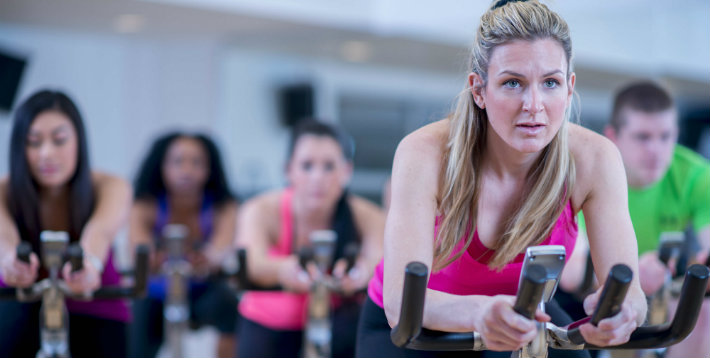Time-poor people who do fewer repetitions during high-intensity interval training (HIIT) workouts may get better fitness benefits than those who complete more, according to a University of Stirling analysis.
Experts from Scotland’s University for Sporting Excellence have reviewed existing studies that investigate the benefits of regularly performing repetitions of a special type of high-intensity cycle sprint known as ‘supramaximal’. They found doing fewer repetitions of these sprint intervals on a bike may lead to greater improvements in cardiorespiratory fitness.

Dr Niels Vollaard, Lecturer in Health and Exercise Science at the University of Stirling led the study.
Dr Niels Vollaard, Lecturer in Health and Exercise Science in the Faculty of Health Sciences and Sport, said: “Lack of time is frequently cited as one of the main barriers to people becoming or staying physically active. High-intensity workouts have begun to tackle this problem, allowing people to get maximum health benefits while working out for a shorter time.
“We found improved cardiorespiratory fitness does not suffer when people complete fewer sprint repetitions and that this may even produce better results. The optimal number of repetitions appears to be just two, so workouts based on supramaximal sprints can be kept very short without compromising on the results.”
The findings of this research are only applicable to ‘supramaximal’ exercise, which requires specialised exercise bikes that enable very high exercise intensities. Whether HIIT workouts at lower intensities also benefit from a low number of sprint repetitions is not yet known.
Previously, it has been assumed that performing more repetitions of high-intensity exercise will produce greater improvements in cardiorespiratory fitness.
In this analysis, published in the leading journal Medicine and Science in Sports and Exercise, scientists found that after performing two maximal sprints, each additional sprint in a training session reduced the overall improvement in fitness by around 5% on average.
Dr Vollaard added: “For the first time, we have evidence to suggest an indicator of fitness levels is improved more by doing fewer repetitions of high-intensity exercise. We are currently performing studies to investigate the physiological mechanisms that may explain this unexpected finding.
“To encourage more people to become active and help increase the health of the population, we need to investigate the optimal duration and number of sprint intervals people could undertake on a bike, while getting the same benefits as longer sessions.”
Fitness levels were measured by VO2max, the maximal amount of oxygen the body is capable of utilising in one minute, which is accepted as one of the best indicators of future health and risk of premature death. However, studying other indicators of health and fitness, including blood pressure and insulin sensitivity, will give a fuller picture of how the body responds to different types of HIIT workouts.
Background information
Media enquiries to Corrie Campbell, Communications Officer, on 01786 466 169 or c.r.campbell@stir.ac.uk

